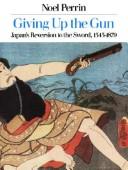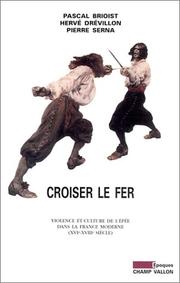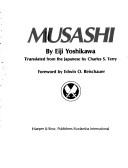| Listing 1 - 8 of 8 |
Sort by
|

ISBN: 0879232781 Year: 1979 Publisher: Boston (Mass.) : Godine,
Abstract | Keywords | Export | Availability | Bookmark
Book
ISBN: 1787444805 1783274271 Year: 2019 Publisher: Woodbridge, UK ; Rochester, NY : The Boydell Press,
Abstract | Keywords | Export | Availability | Bookmark
 Loading...
Loading...Choose an application
- Reference Manager
- EndNote
- RefWorks (Direct export to RefWorks)
A multidisciplinary overview of current research into the enduringly fascinating martial artefact which is the sword.
Swords --- Swordplay --- History. --- Fighting --- Swordsmanship --- Military art and science --- Fencing --- Weapons --- Sword.
Book
Year: 1974 Publisher: Salzburg : Universität Salzburg. Institut für Englische Sprache und Literatur,
Abstract | Keywords | Export | Availability | Bookmark
 Loading...
Loading...Choose an application
- Reference Manager
- EndNote
- RefWorks (Direct export to RefWorks)
English drama --- English drama --- Swordplay in literature. --- History and criticism. --- History and criticism.
Book
ISBN: 9780824835439 9780824836788 Year: 2013 Publisher: Honolulu : University of Hawaiʻi Press,
Abstract | Keywords | Export | Availability | Bookmark
 Loading...
Loading...Choose an application
- Reference Manager
- EndNote
- RefWorks (Direct export to RefWorks)
Zen Buddhism --- Swordplay --- Doctrines. --- Philosophy --- Takuan Sōhō, --- Takuan Sōhō, --- Takuan Sōhō, --- Yagyū, Munenori,
Book
ISBN: 1782046283 1783271035 Year: 2016 Publisher: Suffolk : Boydell & Brewer,
Abstract | Keywords | Export | Availability | Bookmark
 Loading...
Loading...Choose an application
- Reference Manager
- EndNote
- RefWorks (Direct export to RefWorks)
Written around 1430, Duarte of Portugal's remarkable treatise on chivalric horsemanship, the Livro do Cavalgar (Book on Riding), is not only the sole substantial contemporary source on the definitive physical skill of the medieval knight, it is a remarkably intelligent and innovative work that still has much to offer to modern practitioners of physical arts. The book stands out from the body of technical writings that survive from the Middle Ages for its intelligence, insight, and intellectual versatility, ranging from psychological reflections on horsemanship and its implications forhuman ethics, to the details of how to couch a lance under your arm without getting it caught on your armor. Under the general rubric of horsemanship Duarte covers a range of topics that include jousting, tourneying, and hunting, as well as the physical apparatus of equestrianism and various cultural styles of riding.
However, despite its importance for scholarship, its language and technicalcontent have so far resisted proper translation, a need which this book fills. The introduction provides not only the background to make Duarte's text comprehensible, but for the first time offers modern audiences a systematic point of access to the subject of medieval equestrianism in general.
Jeffrey L. Forgeng is curator of Arms and Armor and Medieval Art at the Worcester Art Museum, and teaches as Adjunct Professor of History at Worcester Polytechnic Institute.
Horsemanship --- Chivalry --- Conduct of life --- Armor. --- Arms. --- Chivalry. --- Duarte of Portugal. --- Equestrianism. --- European History. --- Fencing. --- Horse. --- Horsemanship. --- Martial Arts. --- Medieval Culture. --- Medieval History. --- Medieval Society. --- Medieval Sports. --- Middle Ages. --- Military History. --- Swordplay. --- Warfare. --- Weaponry.
Book
ISBN: 9780520284371 9780520959941 0520284372 0520959949 Year: 2015 Publisher: Oakland, California
Abstract | Keywords | Export | Availability | Bookmark
 Loading...
Loading...Choose an application
- Reference Manager
- EndNote
- RefWorks (Direct export to RefWorks)
"Kendo is the first book in English to provide an in-depth historical, cultural, and political account of the Japanese martial art of swordsmanship, from its beginnings in military training and arcane medieval schools to its widespread practice today as a global sport. Alexander Bennett shows how kendo evolved through a recurring process of 'inventing tradition', which served the changing ideologies and needs of Japanese warriors and governments over the course of history. Kendo follows the development of Japanese swordsmanship from the aristocratic pretensions of medieval warriors in the Muromachi period, to the samurai elitism of the Edo regime, and to the patriotism of the Meiji state. Kendo was influenced in the 1930s and 1940s by ultranationalist militarists and ultimately by the postwar government, which sought a gentle form of cultural nationalism to rekindle appreciation of traditional culture among Japan's youth and to garner international prestige as an instrument of 'soft power'. Today kendo is becoming increasingly popular internationally. But even as new organizations and clubs form around the world, the sport remains closely linked to Japan's sense of collective identity"--Provided by publisher.
Kendo. --- Swordplay --- J6976 --- Japanese fencing --- Japan: Sports and recreation -- martial arts, fighting sports -- kendō, iaidō, bōjutsu, fencing. --- Fencing --- Hand-to-hand fighting, Oriental --- Stick fighting --- Swordplay. --- Japan. --- Kendo --- Japan: Sports and recreation -- martial arts, fighting sports -- kendō, iaidō, bōjutsu, fencing --- bamboo. --- bogu. --- collective identity. --- combat. --- cultural studies. --- edo period. --- fighting styles. --- fights. --- global sport. --- history of kendo. --- history. --- inventing tradition. --- japan. --- japanese history. --- japanese martial arts. --- japanese studies. --- japanese. --- kendo. --- kenjutsu. --- martial arts. --- medieval schools. --- meiji period. --- military training. --- muromachi period. --- nationalism. --- physical activity. --- practice of honor. --- protective armor. --- samurai. --- shinai. --- soft power. --- sports. --- swordsmanship. --- traditional culture. --- war. --- warriors.

ISBN: 2876733528 9782876733527 Year: 2002 Publisher: Seyssel : Champ Vallon,
Abstract | Keywords | Export | Availability | Bookmark
 Loading...
Loading...Choose an application
- Reference Manager
- EndNote
- RefWorks (Direct export to RefWorks)
Dueling --- Fencing --- Violence in sports --- Duel --- Escrime --- Violence dans les sports --- History --- Histoire --- Social aspects --- SMV:schermen --- SMV:521100 --- -Violence in sports --- -Sports --- Sports violence --- Sports --- Fighting --- Athletics --- Hand-to-hand fighting --- Swords --- Swordplay --- -History --- Violence --- History. --- -Social aspects --- Social aspects&delete& --- Violence in sports - France - History --- Fencing - Social aspects - France - History

ISBN: 0068598513 4061255614 Year: 1981 Publisher: New York (N.Y.) Tokyo Harper and Row Kodansha international
Abstract | Keywords | Export | Availability | Bookmark
 Loading...
Loading...Choose an application
- Reference Manager
- EndNote
- RefWorks (Direct export to RefWorks)
An epic novel of the Samauri era in Japan. First published in serial format, this novel is often called the Gone with the wind of Japan. Miyomoto Musashi was an actual historical person, but through this novel he has become part of Japan's living folklore.
#SML: Vlamingenstraat C.I.C.M. --- S35/0450 --- J5933 --- Japan--Literature --- Japan: Literature -- modern fiction and prose by individual authors (1868- ) --- Swordsmen --- Swordsmen. --- Miyamoto, Musashi, --- Miyamoto, Musashi. --- Japan. --- Biographical fiction --- Miyamoto, Musashi --- Fiction --- Japan --- #SML: Vlamingenstraat C.I.C.M --- Fencing --- Swordplay --- מוסאשי, מיאמוטו, --- 宮本武蔵, --- 宮本武藏, --- Fiction.
| Listing 1 - 8 of 8 |
Sort by
|

 Search
Search Feedback
Feedback About UniCat
About UniCat  Help
Help News
News